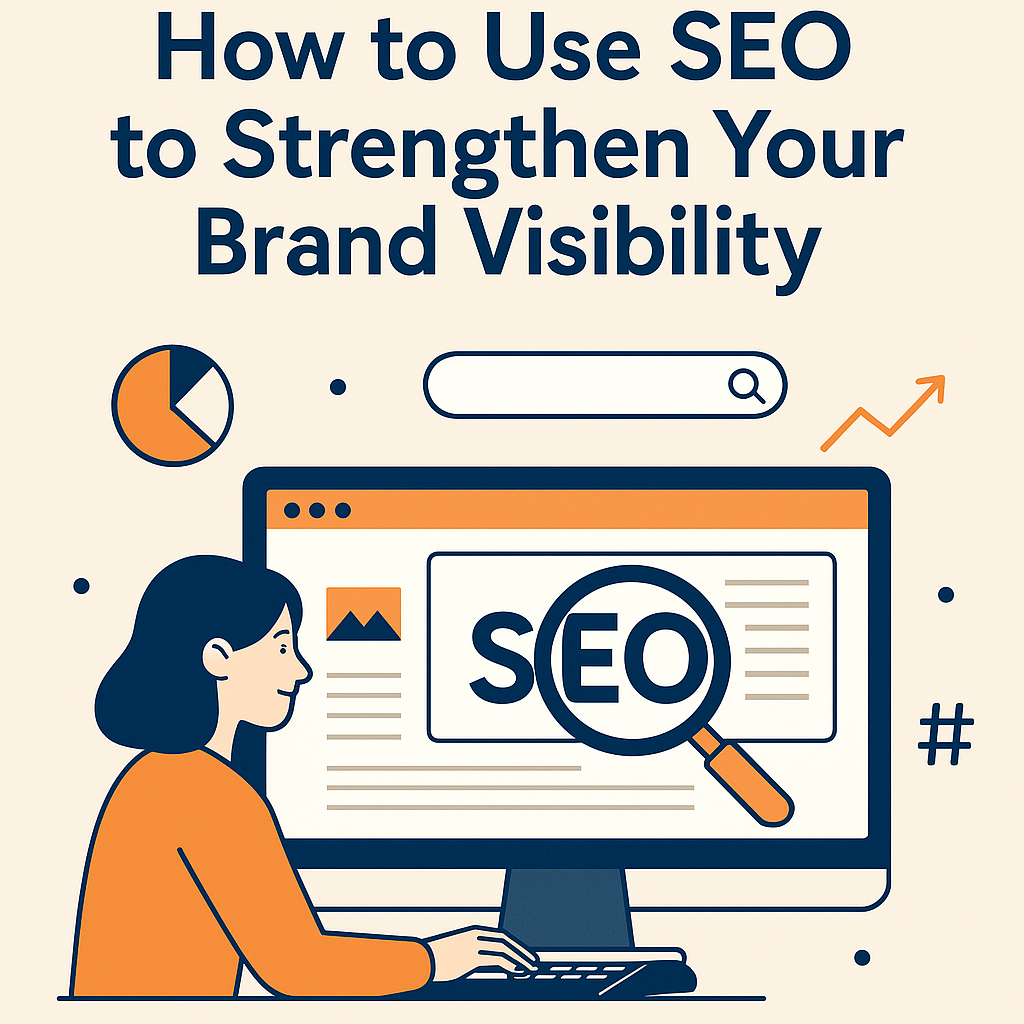Table of Contents
Understanding SEO and Brand Visibility
SEO, or Search Engine Optimization, is the practice of optimizing online content so that search engines like Google rank it higher in results. Brand visibility refers to how often and prominently your brand appears when users search for relevant topics. Good SEO makes your brand discoverable, credible, and competitive. For example, when users consistently see your brand ranking for relevant queries, it builds trust and recognition.Airbnb is a notable case.
They grew globally by creating location-optimized landing pages, targeting long-tail keywords like ‘affordable stay in Tokyo’. This significantly improved their SEO and brand recall. Similarly, smaller brands can optimize niche keywords to outperform larger competitors in focused segments.
Keyword Research: The Foundation of SEO
Keyword research identifies what your audience is searching for. This insight allows you to create tailored content that answers their questions or solves their problems. Using tools like Google Keyword Planner, Ubersuggest, or AnswerThePublic, you can find keywords with strong volume and low competition. Group them into topic clusters to create semantic relevance.
For instance, a skincare brand could target ‘best sunscreens for oily skin’—a long-tail keyword with intent to buy. Buffer and HubSpot have built huge traffic by identifying and consistently targeting such high-value keywords.

Optimizing On-Page SEO Elements
On-page SEO includes titles, headers, meta descriptions, internal links, alt text, and keyword placement. Make your title engaging and keyword-rich. Use H1 for the main title, H2 for subtopics, and integrate your focus keyword naturally in the content.
Companies like HubSpot use schema markup for FAQs, improving visibility with rich results. Internal linking to related content (like our guide on Brand Voice and Tone) boosts authority and helps crawlers index your site more effectively.
Creating High-Quality Content Consistently
Quality content drives organic traffic and builds trust. It should be engaging, original, and tailored to audience intent. Use storytelling, listicles, videos, and infographics.
Buffer is a perfect example—they built millions of monthly readers by consistently offering useful, evergreen content like ‘How to Create a Social Media Calendar.’ Repurpose blog content into videos, email series, or carousels to maximize reach.

Link Building for Greater Authority
Search engines view backlinks as votes of confidence. The more reputable sites link to you, the more trustworthy you appear. Use strategies like guest posting, creating original research, and building linkable assets.
Brian Dean’s Skyscraper Technique—finding content that ranks, improving it, and reaching out to get linked—has driven huge backlink growth. Also engage on platforms like Quora or Reddit to naturally earn referral traffic and backlinks.
Enhancing Technical SEO
Technical SEO ensures your website is easy for search engines to crawl. Focus on site speed, mobile optimization, clean architecture, and HTTPS security. Use tools like PageSpeed Insights and Screaming Frog to audit and fix issues.
Amazon, for instance, maintains lightning-fast pages despite a massive inventory, thanks to superior infrastructure. Even smaller brands should reduce image size, limit redirects, and implement structured data (schema) to improve indexability.
Leveraging Local SEO for Geographic Reach
Local SEO helps brick-and-mortar or service businesses appear in regional searches. Optimize your Google Business Profile, gather local reviews, and include location-based keywords.
Domino’s ranks in multiple cities because each store has unique pages, reviews, and citations. Use BrightLocal to monitor your NAP data across directories, and host or sponsor local events to earn backlinks and press.
Measuring and Analyzing SEO Performance
You can’t improve what you don’t measure. Track performance using Google Analytics, Google Search Console, and rank tracking tools like Ahrefs. Measure KPIs like bounce rate, organic traffic, click-through rate, and conversion.Advanced brands build dashboards in Data Studio for live monitoring. Look at scroll depth, time on page, and branded keyword growth to assess visibility and engagement.
https://writer.delitsmotionpicture.com/?p=1450&preview=truehttps://blog.hubspot.com/marketing/company-branding
BENIFITS
1. *Increased online presence*: SEO helps your website rank higher in search engine results pages (SERPs), making it more visible to potential customers.
2. *Targeted traffic*: By optimizing for specific keywords, you attract relevant traffic to your website, increasing the likelihood of converting visitors into customers.
3. *Credibility and trust*: A high-ranking website is often perceived as more credible and trustworthy, which can enhance your brand’s reputation.
4. *Competitive advantage*: By outranking your competitors, you can gain a competitive advantage and establish your brand as a leader in your industry.
FAQs
1. Q: What is SEO, and how does it impact brand visibility?
A: SEO (Search Engine Optimization) is the process of optimizing your website to rank higher in search engine results pages (SERPs). It impacts brand visibility by increasing online presence, driving targeted traffic, and establishing credibility.
2. *Q: How do I improve my website’s SEO?*
A: Improve your website’s SEO by conducting keyword research, optimizing on-page elements, creating high-quality content, building high-quality backlinks, and ensuring technical SEO.
3. *Q: What are the most important SEO metrics to track?
*A: Key SEO metrics to track include search engine rankings, organic traffic, keyword impressions, click-through rates (CTRs), and conversion rates.
4. *Q: How does content quality impact SEO?*
A: High-quality, engaging, and informative content is essential for SEO. It helps attract links, increases dwell time, and provides value to users, which can improve search engine rankings.
5. *Q: What is the role of keywords in SEO?*
A: Keywords play a crucial role in SEO, as they help search engines understand the content and relevance of your website. Conduct thorough keyword research to identify relevant terms and phrases.
6. *Q: How can I build high-quality backlinks?
*A: Build high-quality backlinks by creating linkable assets, guest blogging, leveraging relationships with influencers and industry partners, and participating in online communities.
7. *Q: What is technical SEO, and why is it important?*
A: Technical SEO refers to the process of optimizing your website’s technical aspects, such as page speed, mobile responsiveness, and security. It’s essential for improving user experience and search engine crawlability
.8. *Q: How can I measure the effectiveness of my SEO efforts?*
A: Measure the effectiveness of your SEO efforts by tracking key metrics, such as search engine rankings, organic traffic, and conversion rates. Use tools like Google Analytics and Search Console to monitor your website’s performance.
. 9.Q: How long does it take to see results from SEO efforts?*
A: The time it takes to see results from SEO efforts varies depending on factors like keyword competition, content quality, and link building. Generally, it can take several weeks to several months to see noticeable improvements in search engine rankings and organic traffic.
Summary
SEO is a powerful tool to boost your brand’s online visibility and trust. From strategic keyword research and content creation to link building and local SEO, every tactic strengthens how your brand is perceived and found. When executed consistently, SEO doesn’t just increase traffic—it shapes brand authority, credibility, and long-term digital success. Brands like Airbnb, HubSpot, and Buffer have proven that smart SEO, paired with consistency and quality, can transform visibility and growth—even on a global scale.